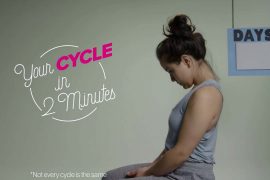4. Filter Your Water
Everyone needs water to survive. But unfiltered tap water can be home to dangerous chemicals. Flouride and Chloride are both used to cleanse tap water of containments. While not harmful in small quantities, it’s possible to be exposed to too much. Depending on where you live, your tap water could also contain dangerous levels of arsenic and aluminum, both of which have been linked to risk of disease.
Invest in a high-quality filter that removes common chemicals found in water. This will reduce the number of contaminants in your body and greatly reduce the risk of cancer, Alzheimer’s disease, skin problems, liver disease and more. Filter water has also been shown to offer health benefits like better digestion, increased nutrient absorption and a boost to metabolism.
5. Avoid Harmful Cleaners
Cleaning your home or apartment regularly is important. But some of the cleaners you use could be causing a problem rather than fixing it. Many store-bought cleaners contain chemicals that are toxic to your health. The most common are phthalates, triclosan, 2-butoxyethanol and perchloroethylene.
- Phthalates: Found in fragranced products like air fresheners, dish soap and toilet paper.
- Triclosan: Found in liquid dishwashing detergent and hand soaps labeled “antibacterial.”
- 2-Butoxyethanol: The key ingredient in many window, kitchen and multipurpose cleaners.
- Perchloroethylene: Also called “perc,” a neurotoxin found in spot removers and carpet cleaners.
To avoid adding more toxins to your home, search for safe cleaning alternatives. Purchase or make single-ingredient cleansers, such as those made from baking powdered, to remove dirt and germs without spraying around chemicals.
How to Create a Healthy and Safe Home Environment
You spend a lot of time at home. So why not make the space as safe as possible? To create a healthy home environment, have a regular cleaning schedule and stick to it. This will remove the build-up of dust, which can cause skin irritations and lead to asthma attacks. Invest in a few plants to increase the flow of oxygen in your home. And research what you’re spraying into the air when using store-bought cleaners.
Emily is the editor of Conservation Folks and a sustainability and conservation blogger. Follow her on Twitter to see the latest updates.










